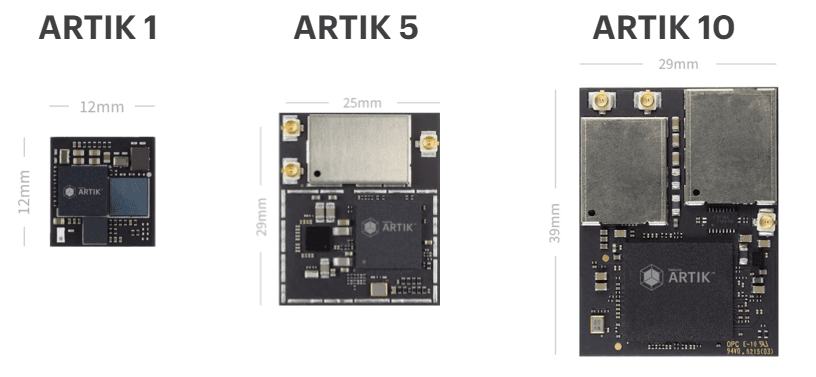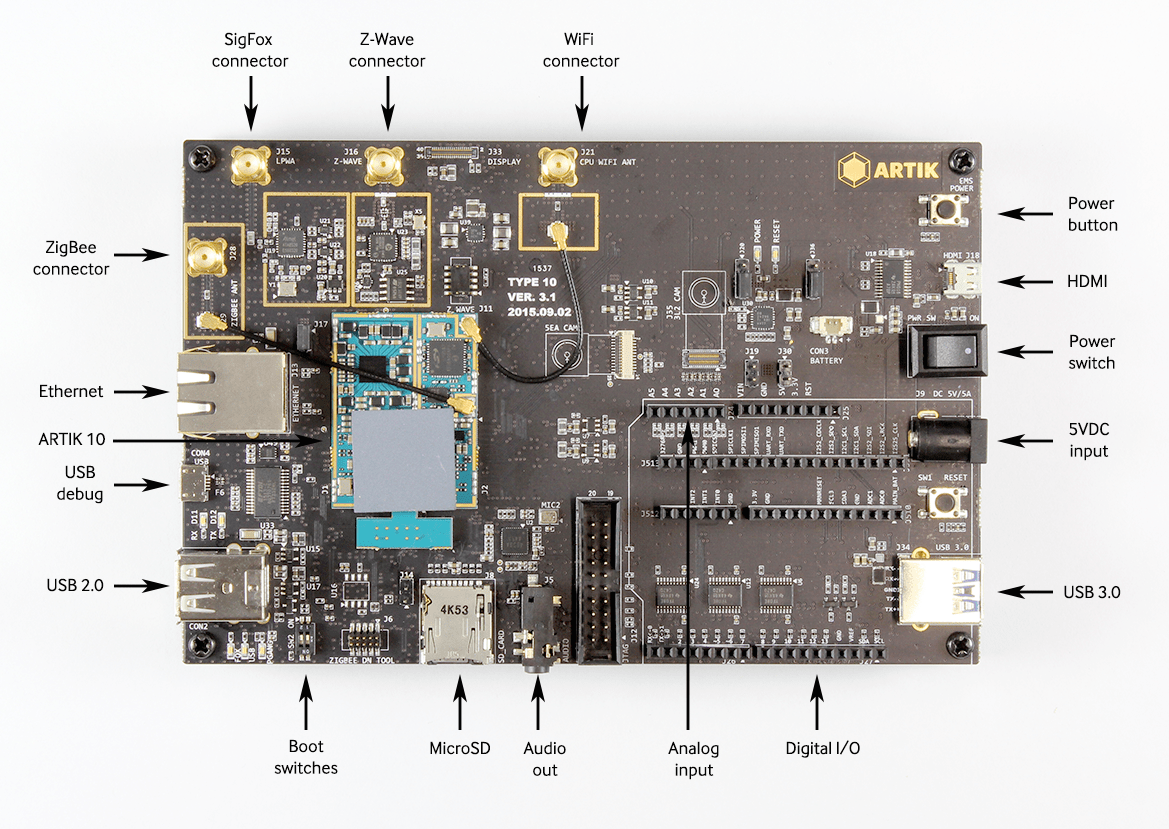Samsung Reveals ARTIK 10 - World's Highest Performance IoT Module
Samsung debuted into the IOT industry with its ARTIK module family and it has revealed its newest member the ARTIK 10. The new IOT module will start shipping next month but is available for order at their official #-Link-Snipped-#. The module, as claimed by Samsung, is designed to be the world’s highest performance Internet-Of-Things (IoT) Module. Its octa-core architecture includes a quad ARM Cortex-A15 and an ARM quad Cortex –A7 along with 2GB LPDDR3 RAM, 16GB flash memory and Mali T628 MP6 GPU. The module has inbuilt 4-Lane MIPI DSI display interface & HDMI both capable of providing a 1920×1080 resolution at 60fps. In addition, the board also has a camera interface with 1x2-Lane MIPI CSI up to 3MP@30fps 1x4-lane MIPI CSI up to 16MP@30fps.

The module packs a Wi-Fi 802.11 a/b/g/n/ac, Bluetooth BT,BLE and a Zigbee 802.15.4 thread. Other interfaces/ports on the board include GPIO - 51 (2 PWM output including), Analog Capture - 6 (0–1.8V range), UART - 3 (Flow Control 1 port), I2C - 6, SPI – 1, I2S – 1, USB 2.0 Host + 1 USB 2.0 Device + 1 USB 3.0, MMC - 1 (T Flash), MIPI - 1 [DSI (4 lane) + 2 CSI (4 lane, 2 lane)] and Clock Out - 1 [(24MHz) + 1 (32.768KHz)]. The board’s input power is 3.4V to 5V and can provide an output of 1.8V/100mA or 2.4V/100mA. The board runs Fedora and provides support for C/C++, Java, JavaScript and Python development environment. ARTIK 10 is powerful enough for tasks like image processing, autonomous vehicle navigation, intensive 3D graphics, virtual reality and model-based robotic control. The board also provides built-in advanced security capabilities.

The ARTIK 10 is much better than Raspberry Pi 3 with better graphics, RAM, flash storage and more connectivity options. Samsung aims to be at the very start of the IoT era as its growing by the day. According to an estimate by #-Link-Snipped-#, the IoT industry will see 20.8 billion devices by 2020 and Samsung plans to get its components into that market. The ARTIK 10 also helps Samsung explore the vast concepts that it wants to implement in its own grand plan of smart homes by producing Inter-Connected Appliances.
Source: #-Link-Snipped-#| #-Link-Snipped-#

The module packs a Wi-Fi 802.11 a/b/g/n/ac, Bluetooth BT,BLE and a Zigbee 802.15.4 thread. Other interfaces/ports on the board include GPIO - 51 (2 PWM output including), Analog Capture - 6 (0–1.8V range), UART - 3 (Flow Control 1 port), I2C - 6, SPI – 1, I2S – 1, USB 2.0 Host + 1 USB 2.0 Device + 1 USB 3.0, MMC - 1 (T Flash), MIPI - 1 [DSI (4 lane) + 2 CSI (4 lane, 2 lane)] and Clock Out - 1 [(24MHz) + 1 (32.768KHz)]. The board’s input power is 3.4V to 5V and can provide an output of 1.8V/100mA or 2.4V/100mA. The board runs Fedora and provides support for C/C++, Java, JavaScript and Python development environment. ARTIK 10 is powerful enough for tasks like image processing, autonomous vehicle navigation, intensive 3D graphics, virtual reality and model-based robotic control. The board also provides built-in advanced security capabilities.

The ARTIK 10 is much better than Raspberry Pi 3 with better graphics, RAM, flash storage and more connectivity options. Samsung aims to be at the very start of the IoT era as its growing by the day. According to an estimate by #-Link-Snipped-#, the IoT industry will see 20.8 billion devices by 2020 and Samsung plans to get its components into that market. The ARTIK 10 also helps Samsung explore the vast concepts that it wants to implement in its own grand plan of smart homes by producing Inter-Connected Appliances.
Source: #-Link-Snipped-#| #-Link-Snipped-#
0
